8 garden watering mistakes that can harm your plants – and how garden experts avoid making them
Watering is crucial, so it is important to make sure you are doing it properly
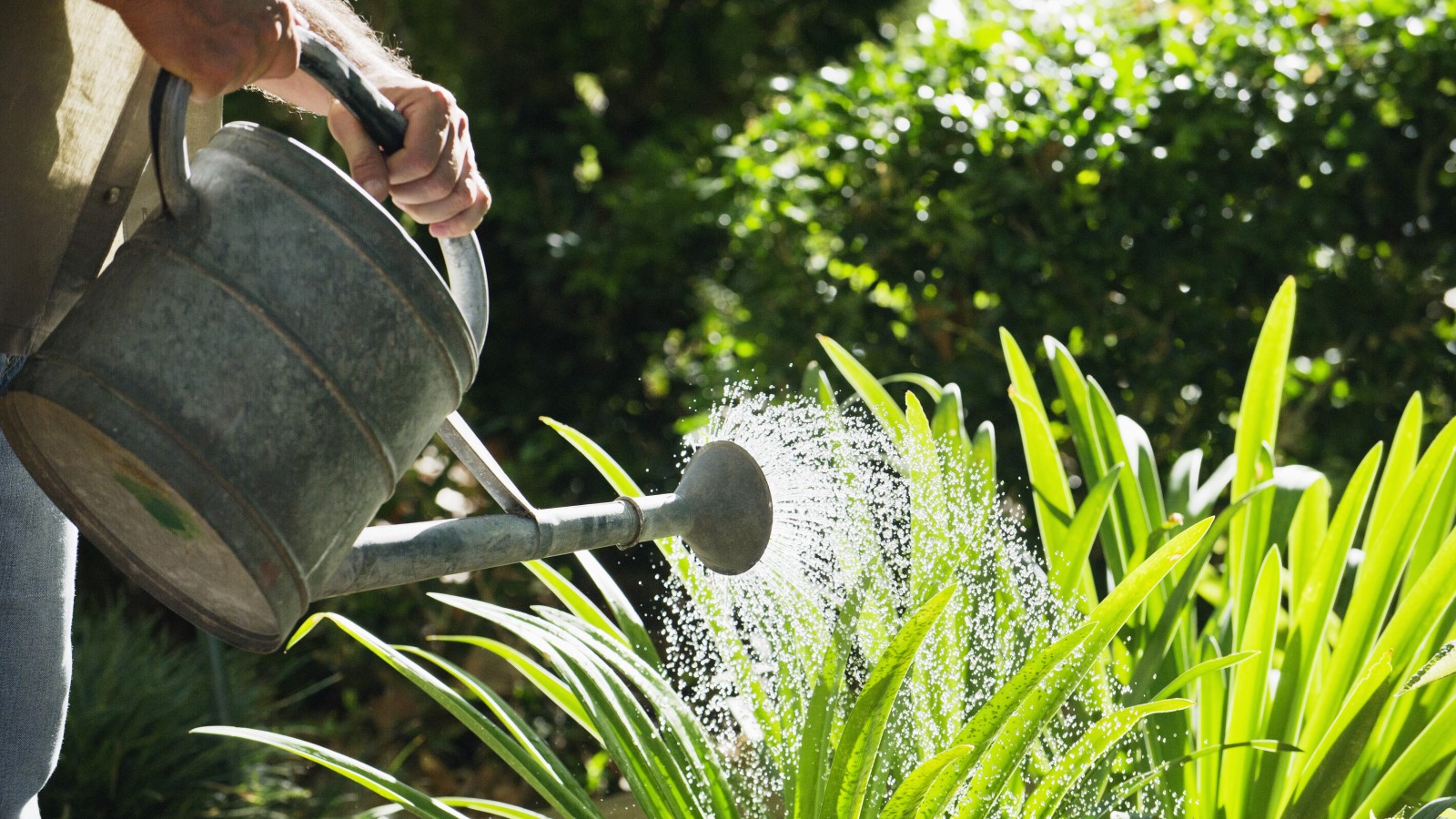

Watering plants is one of the most important care tasks that any gardener does. It ensures that plants survive and grow into healthy specimens, however there are some common garden watering mistakes that many gardeners make that can be harmful to a plant’s health.
Lots of people may not realize that overwatering can be as dangerous as underwatering, and that there are actually better times of day to go watering. By learning more about the best ways to water and how much water each plant needs, it can help you develop a better and more efficient watering regime.
Judging when to water plants can feel like a tricky lesson to learn. Over my years as a professional gardener I did, of course, do a lot of watering. I watered plants in flower borders, vegetable beds, glasshouses, and also nurseries. There are different nuances to pick up for watering different plants in different circumstances and, thankfully, some of the most common garden watering mistakes are simple to learn and avoid.
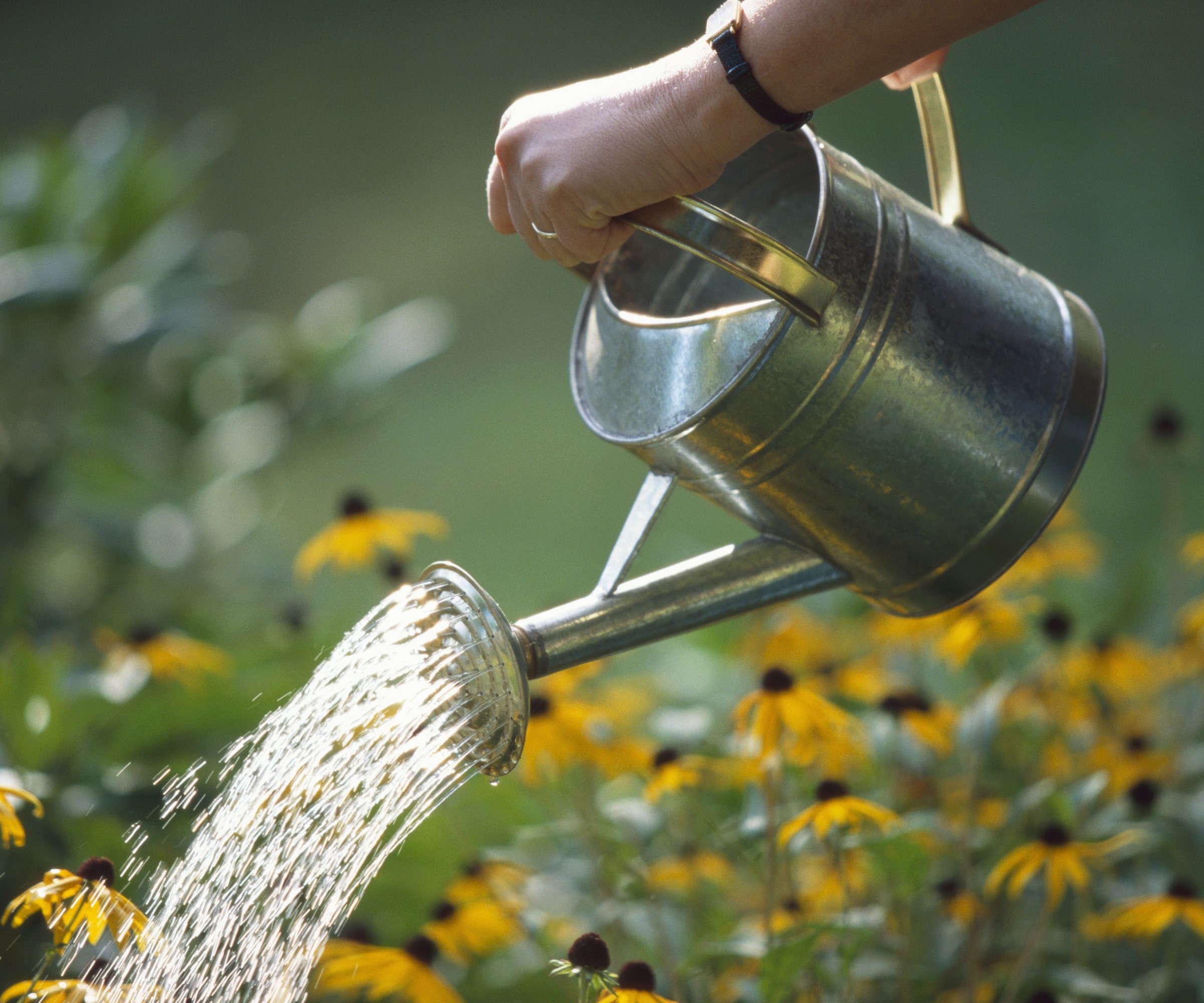
Cans or hoses are most commonly used for garden watering
8 garden watering mistakes to steer clear of
All of the common mistakes that are made when it comes to watering are easily done and often it is novice gardeners that fall foul, but even experienced green-fingered people can be guilty of some of them.
We take a look at 8 of the most common garden watering mistakes, what problems they cause, and how best to avoid them as part of your watering regime. Whether you are watering plaints in containers, in your flower bed or your vegetable garden, it pays to avoid falling into the trap of committing any of the mistakes below.
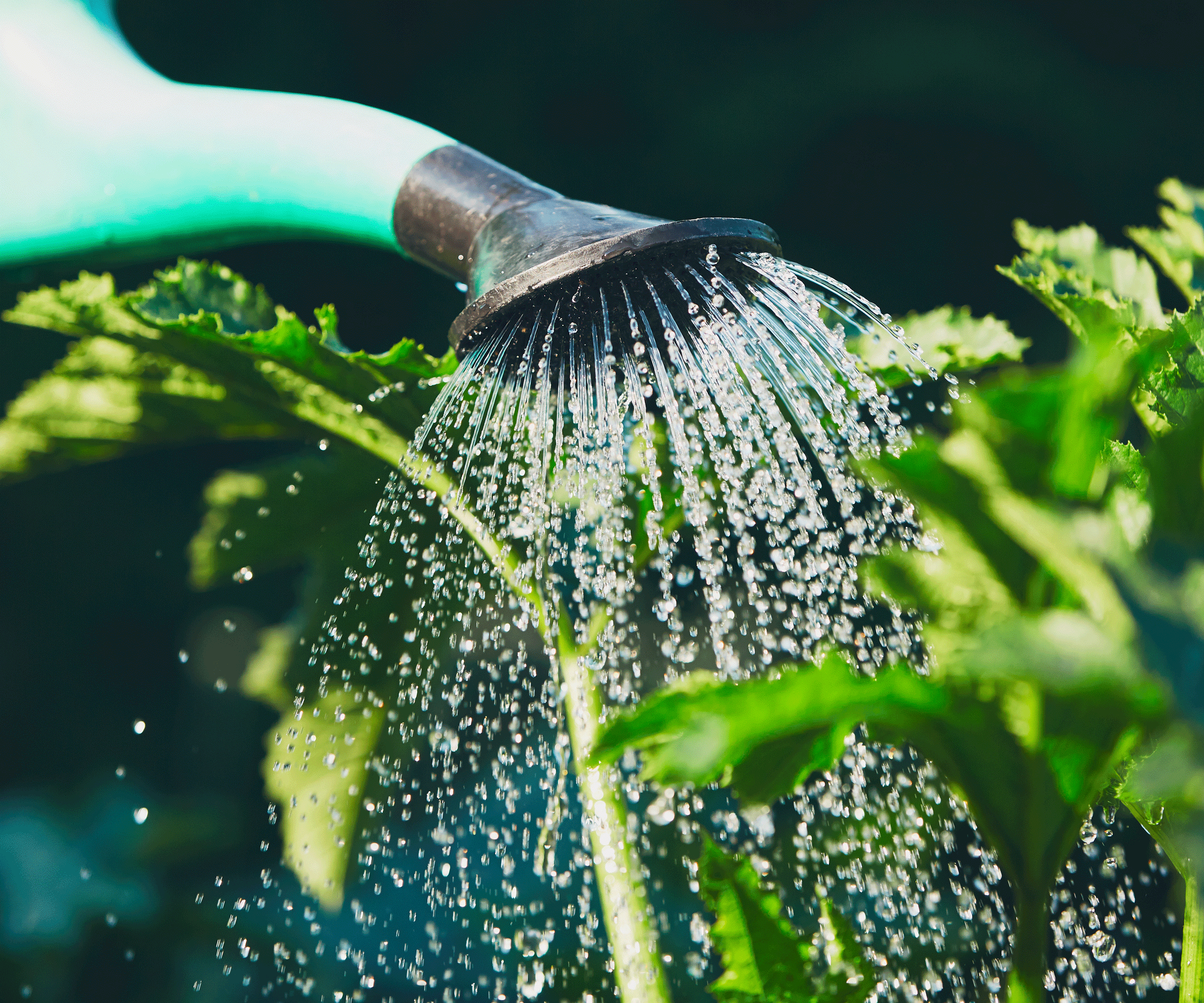
Garden watering mistakes can be easily avoided
1. Over and under-watering
Overwatering is often done out of good intentions and a desire to keep plants healthy, however it can cause many problems. It can lead to root rot, as excess moisture can actually suffocate roots, as well as promote fungal diseases. Overwatering causes weak and stunted growth and stresses plants, making them more susceptible to pests and diseases.
Underwatering leaves plants deprived of the moisture they need to grow and survive, and can ultimately cause death. Plants can show signs of wilting or dry leaves, drooping stems, yellow foliage, and also they can drop flowers or fruit.
It can be difficult to judge when to water plants. First, do your research and understand the plants and their moisture requirements. Some plants will like to be constantly moist, while others might prefer to dry out between waterings. However, no plants will want to sit in waterlogged soil.
A good trick, especially for container gardens, is to check the moisture levels a few inches under the soil surface, simply by pushing a finger into the soil. If it feels moist and cool two or so inches down then that suggests there is enough moisture there, while if it feels dry it is probably time to water.
The soil type, temperature and recent rainfall will be the biggest factors to how frequently you have to water. Check the plants daily, or at least every other day, and it is probably only going to be during really hot periods that plants need watering every day. Plants in containers will need more regular watering than those in the ground as pots dry out quicker.
A moisture meter can be a handy tool to help you understand the water levels down in the soil and judge when to water plants. An example is the XLUX Long Probe Deep Use Soil Moisture Meter available at Amazon that simply needs to be inserted into the soil to see instant results.
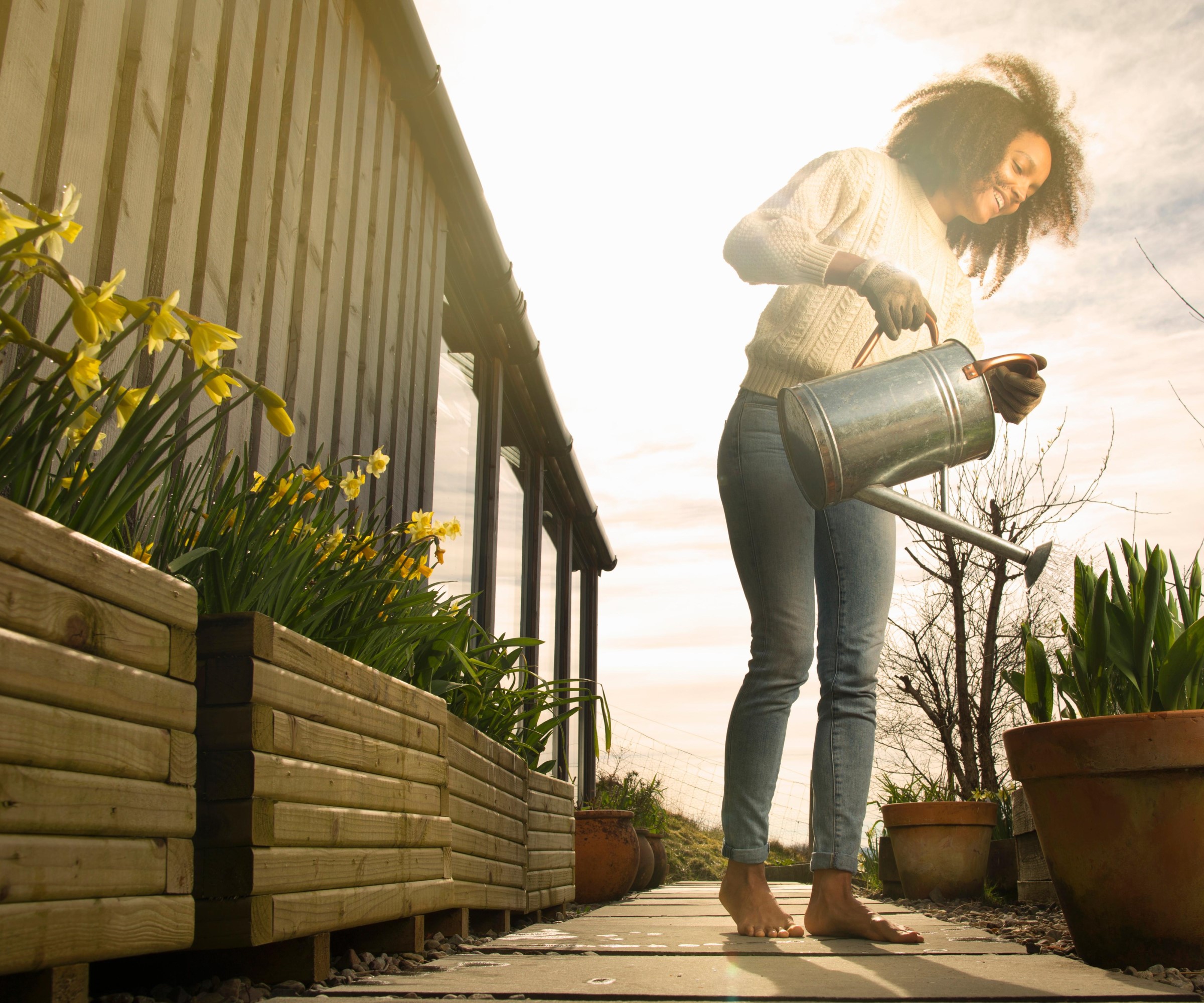
Regular monitoring and checking is vital for watering plants efficiently
2. Watering the foliage
Get the water where it is most needed, which is at the roots. Many gardeners will be guilty of passing over plants from above with a watering can or hose. Where possible, it is always better to water at the base of the plant, so the roots can absorb in that moisture.
Watering plants from above can result in lots of the water being lost to evaporation before it even reaches the ground. If there is not enough moisture at ground level that can cause plants to develop shallow roots, which makes them more vulnerable to drought.
Getting the foliage excessively wet can also lead to fungal diseases, as such pathogens thrive in moist and humid conditions. If you splash the foliage when watering during the hottest parts of the day, this can also actually burn the leaves.
Always strive to water the base of the plant, that means that the water gets where it is needed and not wasted. If you are watering by hand, then aim that watering can down at the plant’s base, while if you are using irrigation systems then consider drip irrigation or soaker hoses rather than sprinklers. A soaker hose, such as the Hlinker Flat Soaker Hose available at Amazon, slowly seeps water constantly and can either be laid on the surface or buried into the soil.
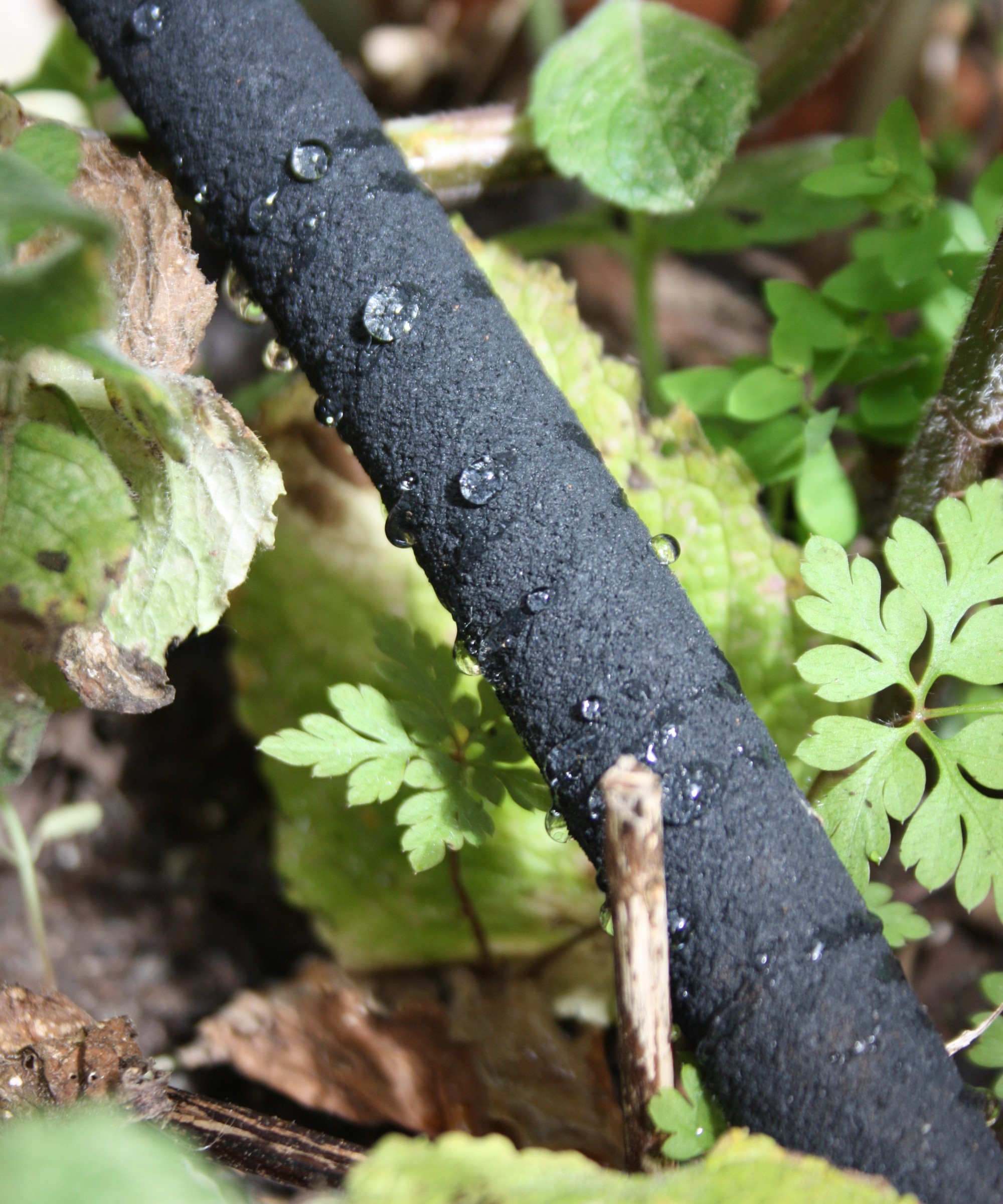
A seep, or soaker, hose can get water slowly to the roots
3. Watering at the wrong time
There are better and worse times of the day to water plants. Novice gardeners may think the best time to water is when the plants are most in need, at the hottest times of the day, however in reality watering plants in hot weather is inefficient.
If you water in the heat of the midday or afternoon sun then most of the water can evaporate before it gets near the plant’s roots. And, as mentioned above, watering in full sun is capable of burning leaves.
The best time of day to water is in the morning, when the temperatures are cooler, as it gives ample time for the water to soak into the soil and reduces evaporation. Any water that does get on foliage has a long time to dry.
Watering in the evening is also a good option, however you need to avoid getting water on the leaves as wet foliage overnight can increase the risk of fungal diseases.
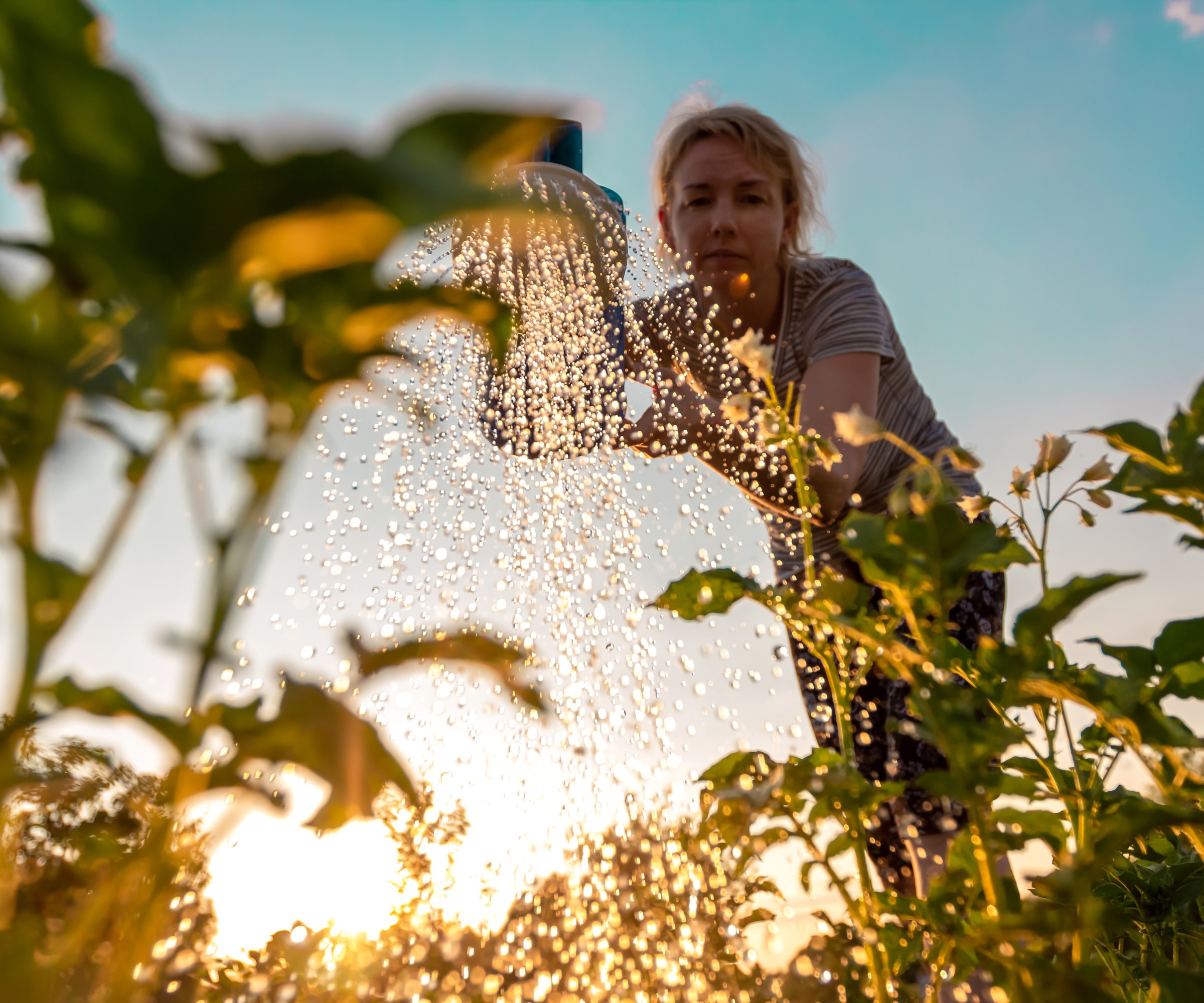
It is best to water in the morning or the evening
4. Not mulching
Mulching is an important task and is the process of putting a layer of material on top of the soil. Common mulching materials include compost, leaf mold, shredded bark, and clippings from mowing a lawn.
Mulching aids with watering as it helps to keep soil moist for longer. Spreading a layer of mulch after thoroughly watering can reduce evaporation, help maintain a cooler temperature in the soil, and help to keep that moisture in the ground for a longer period so plants can take advantage of it.
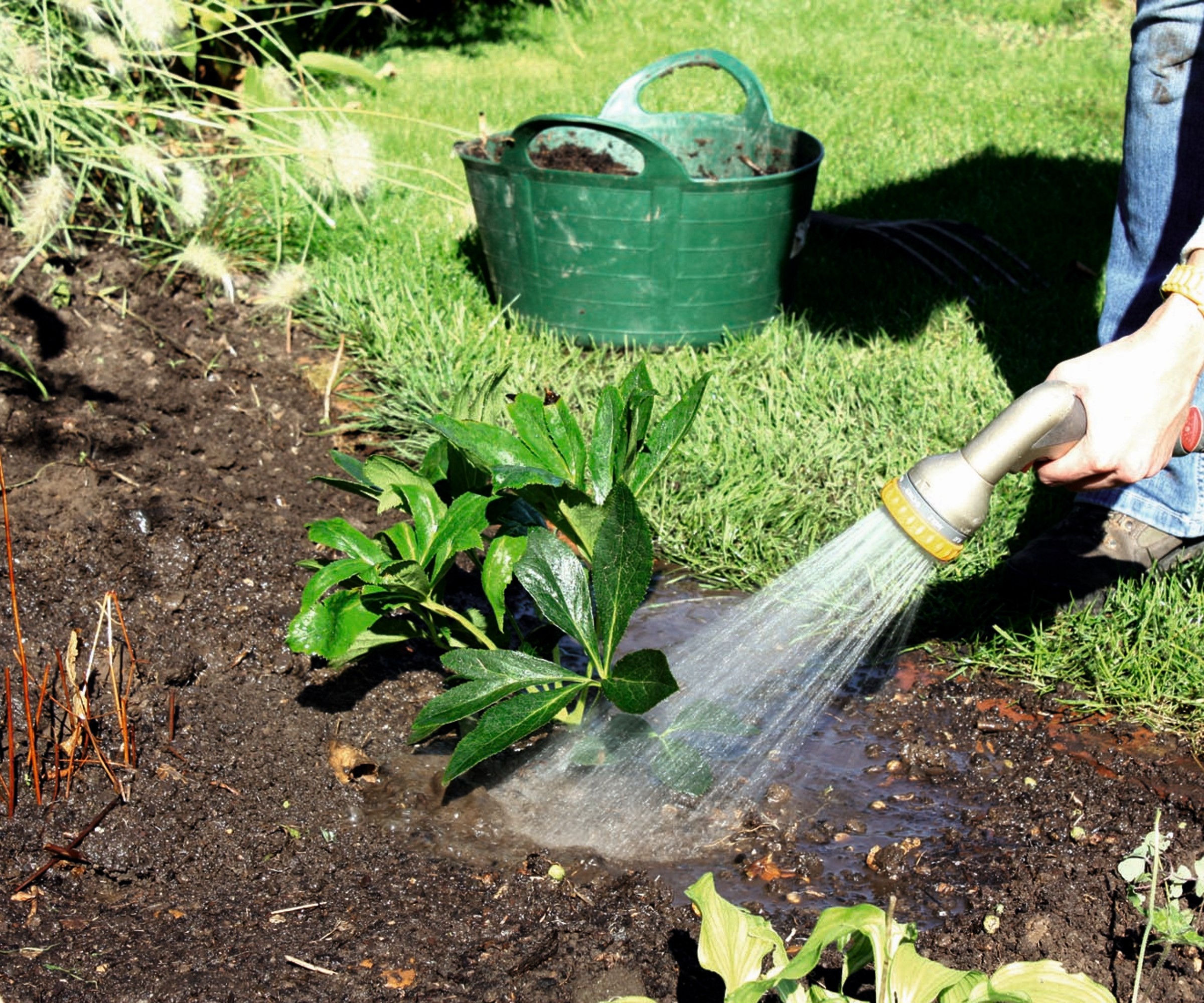
Mulch newly planted plants after giving them a deep water
5. Not using rainwater
While it may not always be possible, it is better to water plants with natural rainwater rather than mains water that comes out of your taps at home.
Rainwater is a natural and chemical-free resource that is best for plants. Rainwater has a pH that is best for most plants in the garden and it is recommended to collect as much rainwater as part of an environmentally friendly garden. There are many rainwater harvesting methods to consider, such as having a rain barrel or a rain chain to collect this precious resource. It's relatively easy to make your own rain barrel if you want to give this a try in your yard.
Tap water can contain chemicals like chlorine and fluoride that can be harmful to some plants, and it can actually raise the pH of soil. If you do have to use tap water for plants, then try to leave it to sit overnight as this can help the chlorine dissipate and it will be at a warmer temperature than straight out of the tap, which plants will be thankful for.
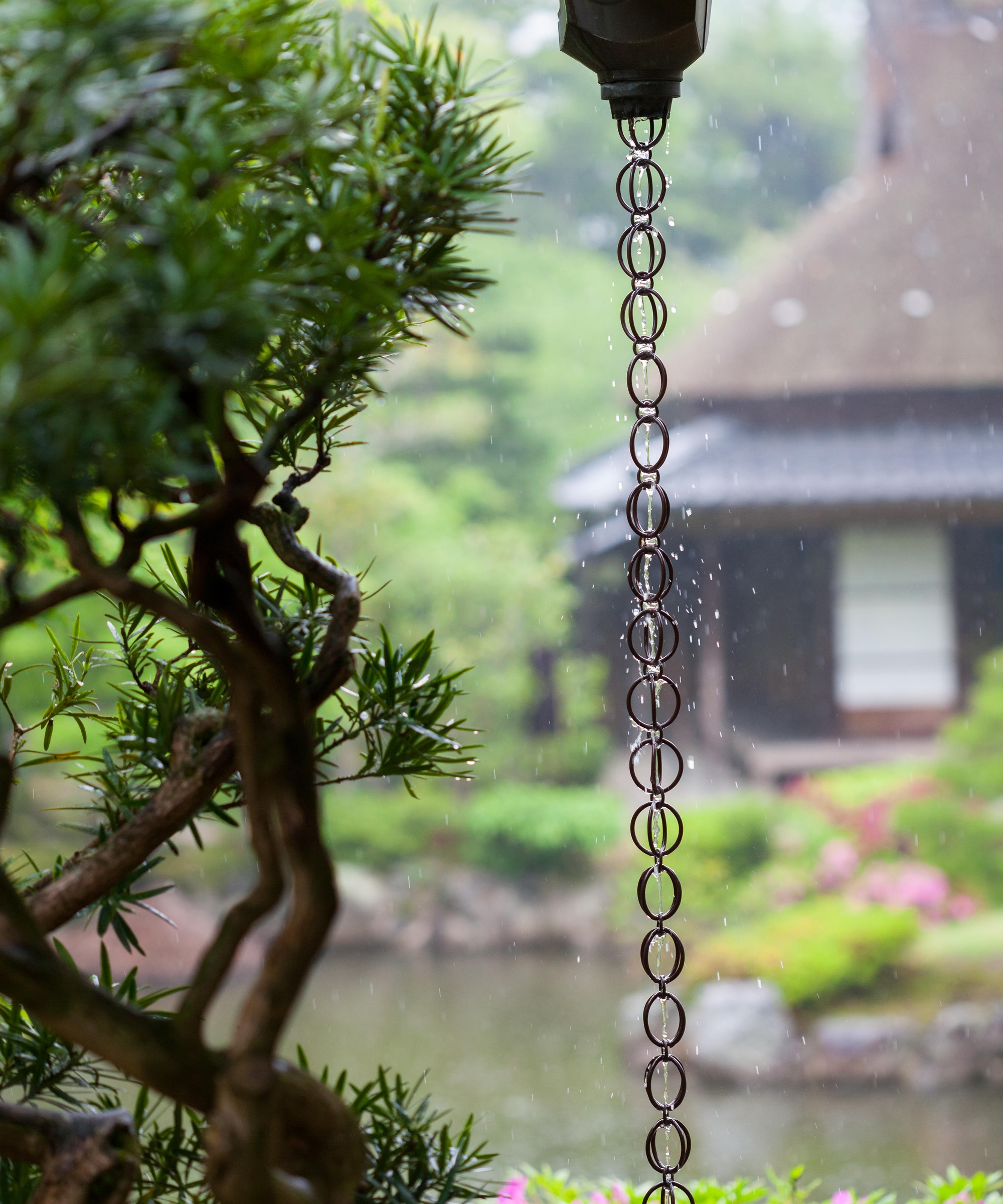
Rain chains collect rainwater to be used for watering the garden
6. Treating all plants the same
It is a mistake to assume that all plants have the same water needs. By taking a one-size-fits-all approach, it can very easily lead to different plant species being overwatered or underwatered. This can be harmful for all the reasons listed above.
It is very important to understand your plants and do your research to try to know the different watering requirements of each plant in your backyard. You will find that some plants, such as hydrangea and primrose, want to be constantly moist and will need regular watering, while others like lavender and succulents are more used to drier conditions so do not need watering anywhere near as often.
So get to know your plants, it is enjoyable to learn more about the different species in your garden and, by getting to know each one better, you will develop a deeper understanding about how regularly you need to water them. This will help establish a better watering regime than just going out and soaking everything.
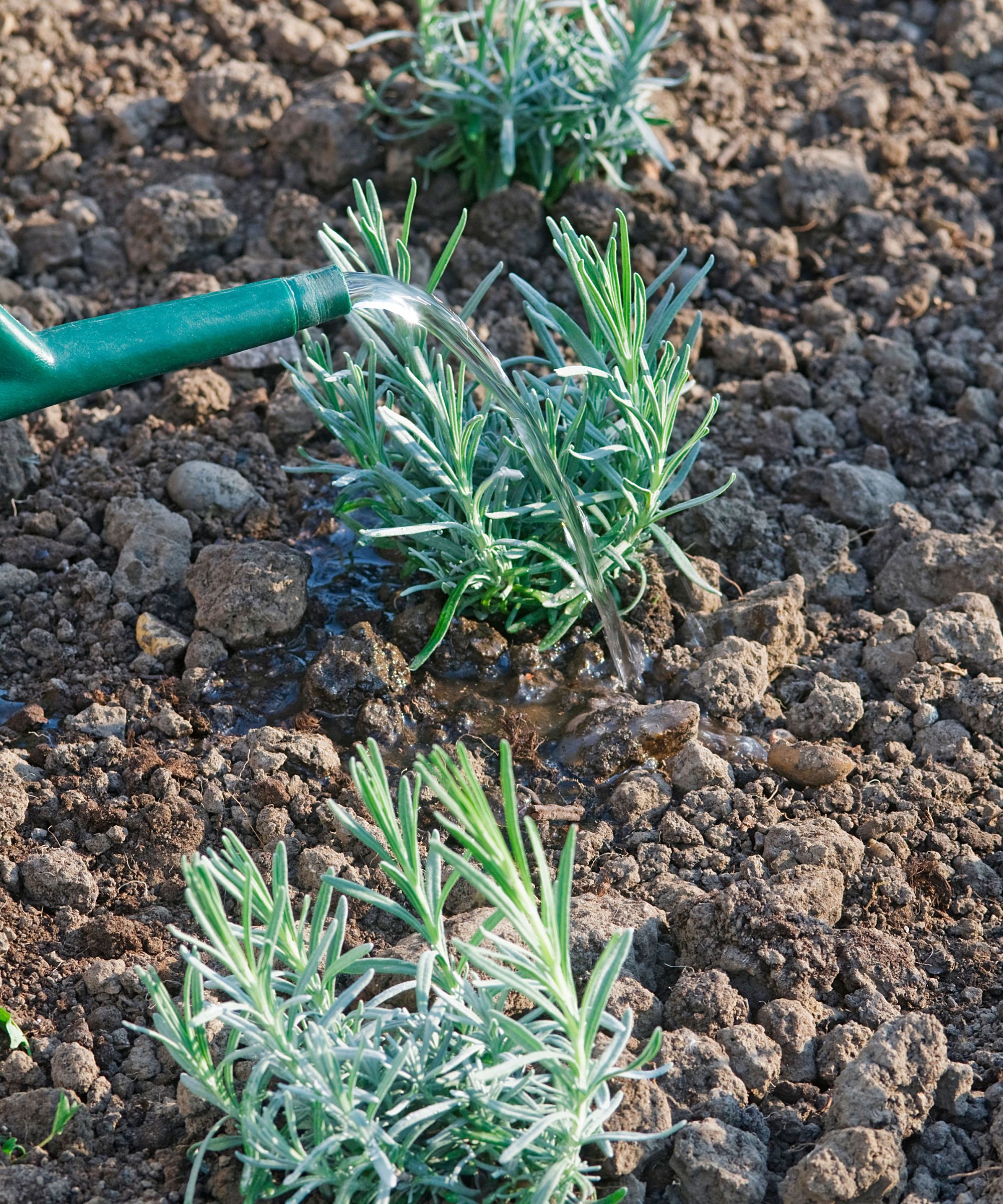
Lavender require less watering than other plants
7. Not watering deeply
How you water, as well as when you water, can make a big difference to the health of your plants. You want to water plants deeply to encourage them to develop a deeper and stronger root system. Watering lightly can actually cause plants to just put out shallow root systems near the surface and that can leave them at more risk during times of drought.
Watering deeply can be done less often and it gives the roots a good soaking and also makes sure that more of the water reaches the rootzone. By lightly soaking only the surface of the soil you can lose up to 50 per cent of that water to evaporation. It means you end up watering more often, less efficiently, and your plants could actually end up more susceptible to dry conditions as a result.
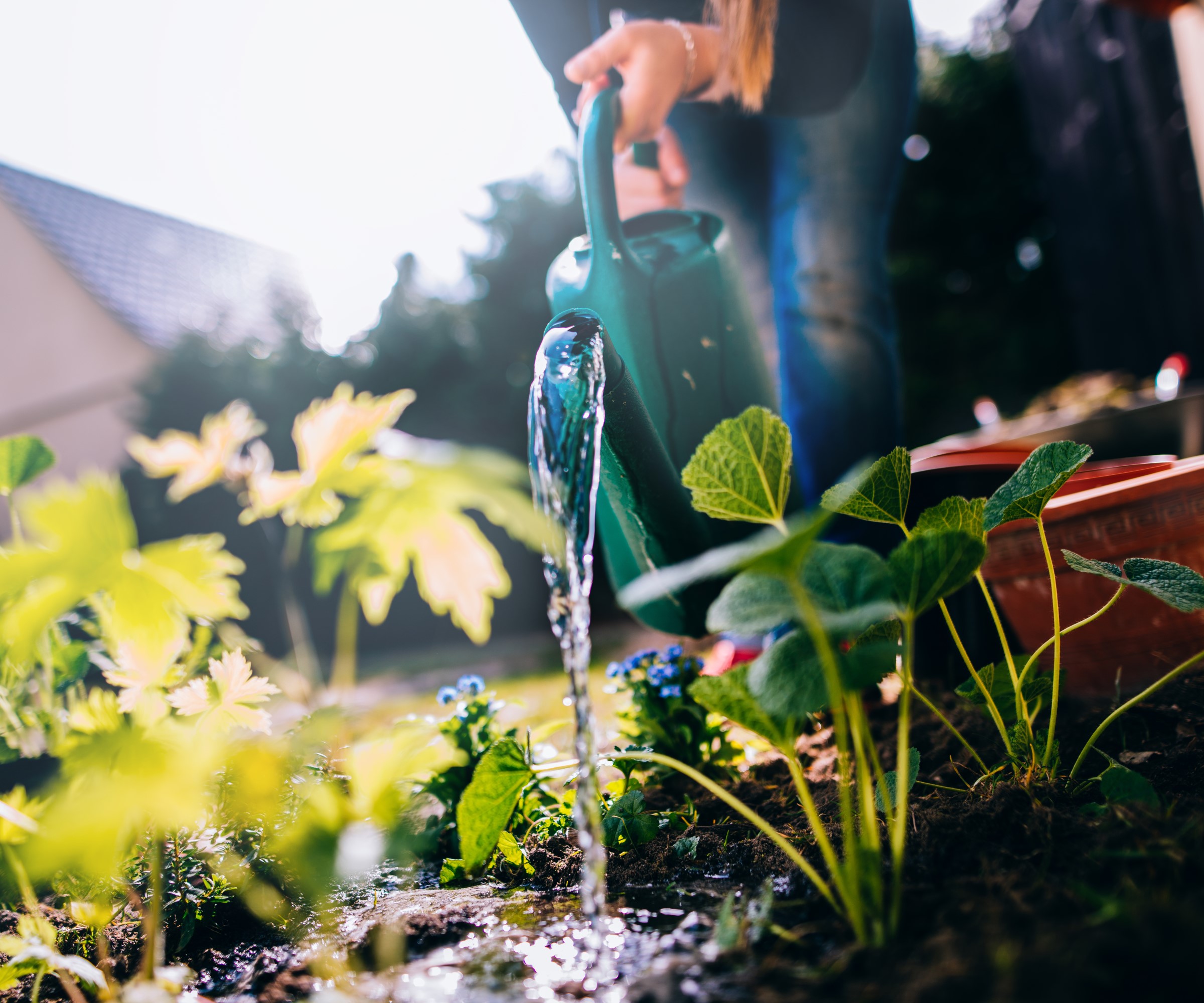
Watering deeply is more beneficial to plant development
8. Too much water pressure
A common mistake is to be too rough when watering your plants. For example, if you use a hose it needs to be done at a low pressure to avoid damaging leaves, moving soil around from around the plant’s roots, and even dislodging plants by blasting them at too high a pressure.
Try to use an adjustable nozzle and check the pressure away from the plants before starting to water them. Too much pressure can be particularly damaging to young plants or seedlings, whose roots may not be fully established.
If you are using a water can, try to avoid tipping a heavy stream of water straight onto a plant. Carefully use the spout to aim at the soil or consider using a rose head, available to buy at Amazon, for a more gentle approach.
With all the potential garden watering mistakes to fall foul of, it may make watering sound tricky to master. But do not fret, they are all simple to understand and often only small adjustments to your watering habits can make the difference. Even those little changes can help make any watering regime feel more efficient, and less of a struggle, and also improve the health of your plants.
Sign up to the Homes & Gardens newsletter
Design expertise in your inbox – from inspiring decorating ideas and beautiful celebrity homes to practical gardening advice and shopping round-ups.

Drew’s passion for gardening started with growing vegetables and salad in raised beds in a small urban terrace garden. He has worked as a professional gardener in historic gardens and specialises in growing vegetables, fruit, herbs, and cut flowers as a kitchen gardener. That passion for growing extends to being an allotmenteer, garden blogger, and producing how-to gardening guides for websites. Drew was shortlisted for the New Talent of the Year award at the 2023 Garden Media Guild Awards.
-
 Martha Stewart's pale pistachio entryway is not just for Easter, it's for life – designers swear by this unique take on my favorite color for year-round calm
Martha Stewart's pale pistachio entryway is not just for Easter, it's for life – designers swear by this unique take on my favorite color for year-round calmThe trend for pistachio green shows no signs of waning
By Jennifer Ebert Published
-
 Miley Cyrus breaks a cardinal decorating rule with her 'floating table' – her unexpected layout transforms a dead space into a stylish breakfast area
Miley Cyrus breaks a cardinal decorating rule with her 'floating table' – her unexpected layout transforms a dead space into a stylish breakfast areaThe singer tosses aside the maxim that furniture shouldn't be floating in the middle of the room with an innovative kitchen layout
By Sophie Edwards Published